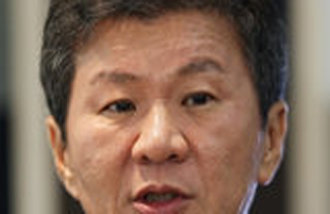[Opinion] Lees and Kims in Vancouver
[Opinion] Lees and Kims in Vancouver
Posted November. 06, 2007 03:18,
The trend of sending children to Canada to study that swept Korea several years ago has expanded to an immigration boom. Jeong Dong-hyeok, the CEO of OK Union Korea, a consulting firm for aspiring immigrants to Canada, said, More parents are willing to immigrate to Canada because their children are mostly satisfied with their Canadian lives.
The United States is less popular as an immigration destination not only because right to permanent residence is not easily granted, but also because the prospects for investment immigration are dim. In contrast, it is easy for skilled Korean workers to immigrate to Canada. Furthermore, if an immigrant leaves 400,000 Canadian dollars (CAD), worth about 388 million won, in a Canadian bank without collecting interest for five years, or pays 120,000 CAD, he or she receives a green card within 1.5 years on average.
Last year, Canada welcomed some 250,000 immigrants. Following Chinese and Indians, the number of Korean immigrants ranked eighth with 6,178 people, including those who entered the country via a third country. The most preferred destination cities in Canada for Koreans are Toronto and Vancouver. In particular, a survey by local daily the Vancouver Sun said that the number of households with telephone numbers registered under the surname Lee amounted to 5,800, the biggest number under any single surname. Although the figure includes both Koreans and Chinese using the name, it is likely that the number of Chinese Lees exceeds that of Koreans since Lee is the most common surname in China, accounting for eight percent of the Chinese population. Household phone numbers registered under Kim, a typical Korean surname, amounted to 2,400 households, coming in fifth.
The parents of Korean students studying in Canada find it increasingly difficult to finance their studies and livings due to the strong Canadian dollar. The value of the Canadian dollar shot up to 970 won per CAD, up 20 percent from the 800-won range at the beginning of the year. Foreign students without green cards must pay around 10 million won in school tuition annually, even if they attend a public school. This means that parents have to pay an extra five million won, reflecting the current exchange rate. On the other hand, the won-dollar exchange rate went down to 908 won against the dollar from 930 early this year. No wonder parents with children living in Canada gasp at the rising expenses for studying in Canada.
With the stronger Canadian dollar, many Canadians shop in the U.S. so much so that cars rush to Seattle from Vancouver on weekends. As a result, it takes more than two hours and 40 minutes to travel the 250-km road between the two cities. Thrifty Canadians who wish to avoid traffic congestion shop online. With a 20 percent increase in online orders, there are more mail and parcel deliveries than can be handled. This leads to the question whether the backlog of the to-be-delivered items will adversely affect the businesses of the Lees and Kims who immigrated to Canada.
Hong Gwon-hee, Editorial Writer, konihong@donga.com







